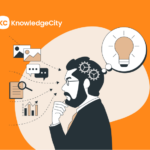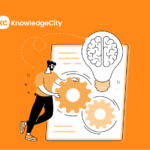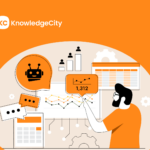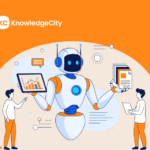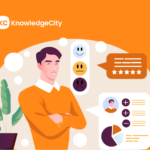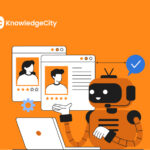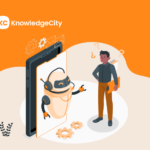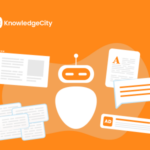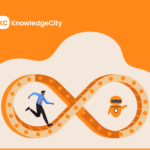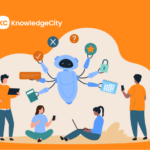Sales has always been about human connection. A confident voice, a good story, the ability to read a customer’s hesitation and respond with empathy, these are the timeless skills that make a great salesperson. But the environment your sales teams operate in today is very different. Buyers are better informed, competition is intense, and technology is rewriting how conversations happen. For HR and L&D leaders, this is a chance to help sales teams learn new tools and habits that keep them effective.
That is where AI systems come into play. Used the right way, they are not about replacing the human element of sales but about amplifying it. For HR and L&D professionals, they can become a structured way to close skill gaps, shorten ramp-up time, and make training more practical.
Let’s walk through how AI can help you reskill and upskill sales teams, and why this matters more than ever.
Turning Data into Smarter Training Programs
A common frustration among HR and L&D leaders is the amount of guesswork in training design. You may know that your salespeople need better lead prioritization skills, but pinpointing exactly where they stumble can be hard. Modern AI tools now track how sales representatives interact with customers across emails, calls, and meetings. They identify the moments when a deal slows down, whether because of weak objection handling or missed cues.
This analysis is not abstract. Imagine receiving a report that shows which sales representatives lose momentum at the proposal stage, and which ones consistently succeed in discovery calls. With this clarity, you can design training that addresses specific patterns rather than relying on broad assumptions. Training stops being generic and starts being focused.
The benefit of this is twofold. First, salespeople receive feedback rooted in real situations rather than theory. Second, your learning budgets are focused on areas that truly move the needle. Instead of rolling out generic webinars, you deliver coaching where it matters most. Once these programs are in place, the system continues to track performance, providing ongoing insights into how skills are developing and where further support may be needed.
When you connect learning design directly to performance data, reskilling no longer feels like a burden for employees. It feels like a path to real success.
Coaching That Works in Real Time
Traditional coaching is powerful, but it is often limited by timing. A manager might review a call recording a week later, by which time the salesperson has already moved on. Modern tools are now capable of listening during calls and surfacing helpful prompts while the conversation is still unfolding.
For example, if a customer raises a pricing objection, the system can suggest responses drawn from the company’s best practices. If the representative is talking too much and not asking enough questions, they get a nudge to shift gears. This type of immediate coaching is not just corrective; it helps the salesperson learn in the moment when the lesson sticks best.
For HR and L&D leaders, this is a breakthrough in learning design. Instead of waiting for quarterly reviews, your teams receive thousands of small, personalized adjustments during their daily work. Over time, these micro-lessons build stronger habits than any workshop can achieve on its own.
As you can understand, the impact extends beyond the individual. Sales managers are freed from repetitive training tasks and can focus on higher-level development. Teams start performing more consistently, which raises confidence across the organization.
Personalizing Learning Journeys
If you have onboarded new salespeople recently, you know how varied their learning needs can be. Some struggle with product knowledge, others with building trust on calls, and others with time management. A single onboarding program rarely fits all.
AI platforms can now tailor learning journeys to each salesperson’s unique profile. They identify weak points, recommend specific practice modules, and even simulate customer scenarios for practice. A new representative might run through a virtual negotiation exercise multiple times until they build confidence, while a skilled salesperson might focus more on advanced objection handling.
This personalization saves time and improves readiness. For HR and L&D, this means fewer lost months waiting for representatives to ramp up. For salespeople, it means less frustration and faster success.
The emotional impact here is significant. When employees feel the company understands their unique struggles and invests in their personal growth, their motivation increases. Retention follows naturally because training no longer feels like a task to complete. It feels like a gift.
Expanding Soft Skills Alongside Hard Skills
One risk with digital training tools is focusing only on quantitative outcomes, like conversion rates. But as HR and L&D professionals know, the soft skills often make the biggest difference. Empathy, listening, and adaptability cannot be ignored.
The good news is that the same AI systems tracking calls and emails can also detect sentiment and emotional tone. They highlight whether a representative comes across as empathetic, whether they interrupt too much, or whether they fail to acknowledge a customer’s concerns. With this insight, you can design coaching that balances both the hard data of sales performance and the soft skills of human connection.
The balance is what builds future-ready sales teams. Upskilling does not just mean teaching how to close deals faster. It means shaping professionals who can sustain trust in a market where customers value relationships as much as results.
Using Virtual Practice to Build Confidence
One of the hardest parts of training is giving salespeople the chance to practice without risk. No one wants to experiment on an important client. That is where virtual simulations become so powerful.
Today, platforms allow representatives to rehearse conversations with lifelike virtual customers. These simulations can throw in common objections, emotional reactions, or curveball questions. Representatives can try different approaches, fail safely, and learn from mistakes before they ever pick up the phone for real.
For L&D teams, this provides a way to offer consistent practice opportunities that do not depend on busy managers or live prospects. For employees, it reduces anxiety. They enter real conversations with the feeling that they have already been there before. Confidence rises, and with it, performance.
Supporting Managers with Clearer Insights
Sales managers carry the responsibility of guiding their teams, but they often lack visibility into the finer details of daily performance. This makes it hard for them to know where to step in.
Modern systems change this by providing dashboards that highlight skill gaps across the team. A manager can see that one representative struggles with handling objections, another with discovery calls, and another with follow-ups. Armed with this knowledge, managers can coach more effectively.
For HR and L&D leaders, this alignment is invaluable. It ensures that training programs support managers’ day-to-day guidance. Everyone works from the same playbook, which leads to consistent development and stronger results.
Preparing for the Future of Selling
The pace of change in sales is not slowing. Already, digital avatars are selling products in online livestreams around the clock, and advanced systems can predict conversions with near-perfect accuracy. While not every organization will adopt these right away, the direction is clear: sales roles will continue to evolve.
For HR and L&D professionals, this makes reskilling a continuous responsibility rather than a one-time event. Your teams will need to learn how to work alongside advanced tools, how to focus their human skills where they add the most value, and how to keep adapting as the landscape shifts.
This is not something to fear. It is an opportunity to elevate the role of salespeople, giving them more time for authentic customer engagement while removing repetitive and draining tasks. In other words, the human part of sales becomes even more important.
Bringing It All Together
The key for HR and L&D leaders is designing learning programs that leverage these tools to create lasting impact, rather than questioning if they can improve sales results.
You can start by integrating data-driven insights into your training design, building real-time coaching into daily work, personalizing learning journeys, and balancing soft skills with hard skills. Add simulations for safe practice and equip managers with clearer insights. In doing so, you will not only reskill your sales teams for today but also prepare them for tomorrow.
At KnowledgeCity, our courses provide up-to-date, practical knowledge to keep your workforce prepared. Developed by US-based university professors and industry experts, each program combines real-world insights with proven learning methods. Our AI sales courses help teams build the skills and confidence they need to perform effectively, adapt to new tools, and stay current in all aspects of their work.
Subscribe to Our Newsletter
Join 80,000+ Fellow HR Professionals. Get expert recruiting and training tips straight
to your inbox, and become a better HR manager.

 KnowledgeCity
KnowledgeCity 
